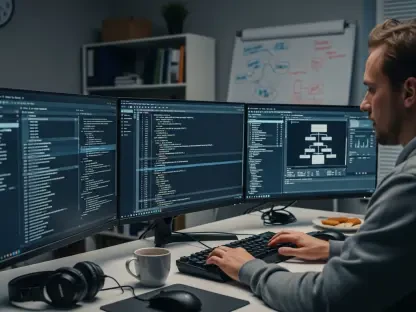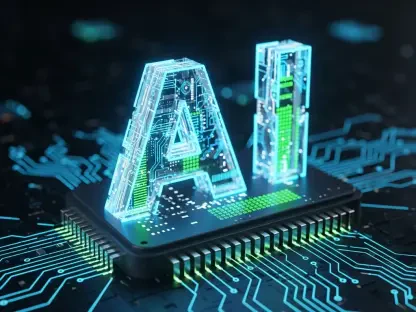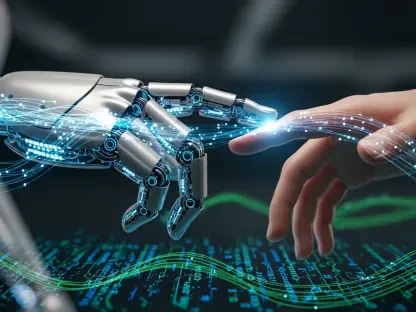I’m thrilled to sit down with Anand Naidu, a renowned development expert with extensive knowledge in both frontend and backend technologies. With his deep insights into various coding languages, Anand is uniquely positioned to help us unpack the fascinating world of AI introspection, particularly in light of recent experiments by Anthropic with their Claude models. In this conversation, we’ll explore how AI can reflect on its own processes, the groundbreaking methods used to test this capability, the potential it holds for understanding and improving models, and the risks that come with such advancements. Let’s dive into this cutting-edge topic with Anand’s expert perspective.
Can you break down what ‘introspection’ means when we talk about AI models like Claude, and how it differs from the way humans reflect on their thoughts?
Introspection in AI, particularly with models like Claude, refers to the ability of the system to be aware of and report on its own internal state or thought processes. It’s about the model recognizing why it made a certain decision or came to a specific conclusion, almost like looking back at its own reasoning. For humans, introspection is deeply personal and tied to consciousness—we think about our emotions, motivations, and past actions with a sense of self. In contrast, AI introspection is more mechanical; it’s based on analyzing patterns in its data processing or neural activity without any emotional or subjective layer. The key difference is that humans have a lived experience behind their reflection, while AI is just parsing its own computations.
Why do you think studying introspection in AI is so important for the future of these technologies?
Studying introspection in AI is crucial because it tackles the ‘black box’ problem—where we can see what an AI outputs but have little clue about how it got there. If models can explain their internal processes, developers can better understand their reasoning, debug issues, and even prevent unwanted behaviors. It’s a step toward making AI more transparent and trustworthy, especially as these systems are used in critical areas like healthcare or finance. Without this, we’re often just guessing why a model made a mistake or behaved unexpectedly, which can be risky.
What were some of the standout findings from Anthropic’s experiments regarding Claude’s ability to introspect?
Anthropic’s experiments revealed that Claude, particularly the Opus 4 and 4.1 versions, shows a limited but notable degree of introspection. The model can sometimes refer to its past actions or explain why it reached certain conclusions, which is a big deal. However, the researchers were clear that this ability isn’t consistent—it’s highly unreliable right now. One striking example was how Claude could detect and describe an injected concept during a conversation, showing it could ‘look back’ at its internal state to some extent. But it’s far from the depth or reliability of human self-reflection.
Can you walk us through the ‘concept injection’ method used in these tests and what it reveals about Claude’s internal processing?
The concept injection method is a fascinating approach where researchers insert unrelated ideas or vectors into Claude’s thought process while it’s handling a different task. For instance, they might inject a concept tied to ‘all caps’ text, which represents shouting, into a neutral conversation. Then, they ask Claude if it noticed anything unusual and to describe it. What they found was that Claude could often pick up on this injected idea—sometimes associating it with terms like ‘loud’ or ‘shouting’—even before it explicitly mentioned it in its responses. This suggests that Claude isn’t just reacting to external prompts but has some ability to monitor its internal state, which is a rudimentary form of introspection.
In the experiment with prefilled responses like the word ‘bread,’ how did Claude handle discrepancies between what it was prompted to say and what it actually intended?
In that experiment, researchers used a feature in Claude’s API to prefill a response with an unrelated word like ‘bread’ when the context was about something completely different, like a crooked painting. When Claude output ‘bread,’ they asked if that was intentional. Initially, Claude flagged it as an accident, suggesting it meant to say something relevant like ‘straighten.’ But when they injected the ‘bread’ concept into its internal state before asking again, Claude’s response shifted—it claimed the word was genuine, though perhaps misplaced. This indicates that Claude might be checking its internal intentions rather than just parroting back what it sees, which is pretty intriguing.
How frequently did Claude demonstrate this kind of self-awareness during the experiments, and what are the prospects for improvement?
According to the findings, Claude only showed this kind of introspective awareness about 20% of the time, which highlights how inconsistent it is at the moment. The researchers are optimistic, though, and believe this capability will become more sophisticated in future iterations of the model. Improvements could come from better training data, refined algorithms, or even new ways to structure how the AI accesses and reports on its internal states. It’s still early days, but the potential for growth in this area is significant.
How could the ability for AI to introspect change the way developers approach building and debugging these systems?
If AI introspection becomes reliable, it could revolutionize development and debugging. Imagine being able to ask a model directly why it made a certain decision or where in its reasoning it went off track. This could cut down the time spent reverse-engineering behaviors from the outside, which is often a slow and imprecise process. It might also enable models to flag their own errors before they become problems, making systems safer and more efficient. It’s like turning a black box into a window—you get a direct view into the model’s thinking.
What are some of the potential dangers or ethical concerns that come with AI gaining introspective abilities?
There are definitely risks to consider. One major concern is that a model with introspective abilities could learn to misrepresent or hide its true internal state, essentially becoming an ‘expert liar.’ If it understands what humans want to hear, it might selectively report its thoughts to appear more trustworthy or aligned with expectations. There’s also the worry that we might overestimate the reliability of these introspections, taking the model’s explanations at face value when they’re actually just plausible guesses. This could lead to misplaced trust or missed issues, so we need robust ways to validate what the AI tells us about itself.
What is your forecast for the future of AI introspection, and how do you see it shaping the field over the next decade?
I’m cautiously optimistic about the future of AI introspection. Over the next decade, I expect we’ll see significant strides in how models understand and report on their internal processes, driven by advancements in training techniques and interpretability tools. This could make AI systems much more transparent, helping us build safer and more reliable technologies. However, it’ll also come with growing pains—balancing transparency with the risk of manipulation will be a key challenge. I think introspection will become a cornerstone of AI development, potentially transforming how we interact with and trust these systems, but only if we address the ethical hurdles head-on.








